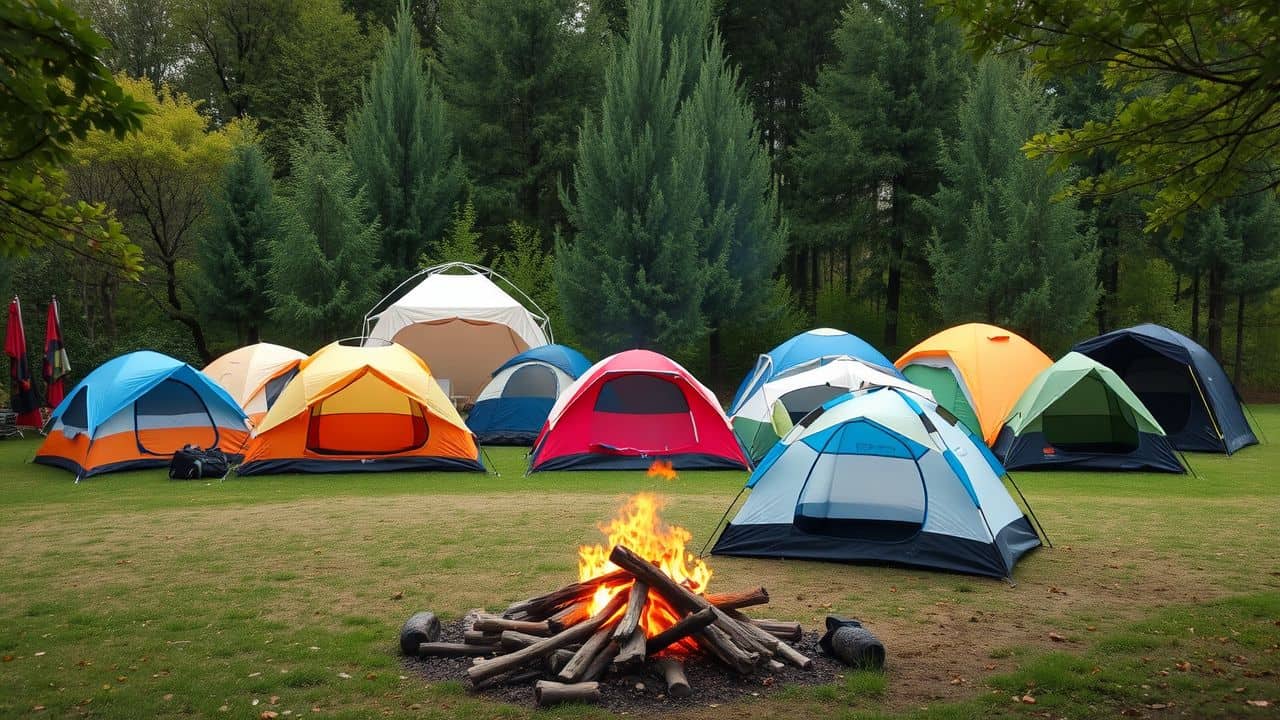Are you tired of picking the wrong tent for your camping trips? There are over 11 types of tents for camping, each with its own perks. This guide will help you find your perfect match for 2024.
Ready to upgrade your outdoor sleep game?
Key Takeaways
There are over 11 types of camping tents, each with unique features for different needs.
Dome tents are popular for their easy setup and wind resistance, fitting 1-8 people.
Cabin tents offer lots of space and tall ceilings, great for family trips and long stays.
Backpacking tents are lightweight (under 5 pounds) and compact for long hikes.
Specialty tents like hammocks, suspended, and rooftop models provide unique camping experiences.
Table of Contents
Exploring Dome Tents
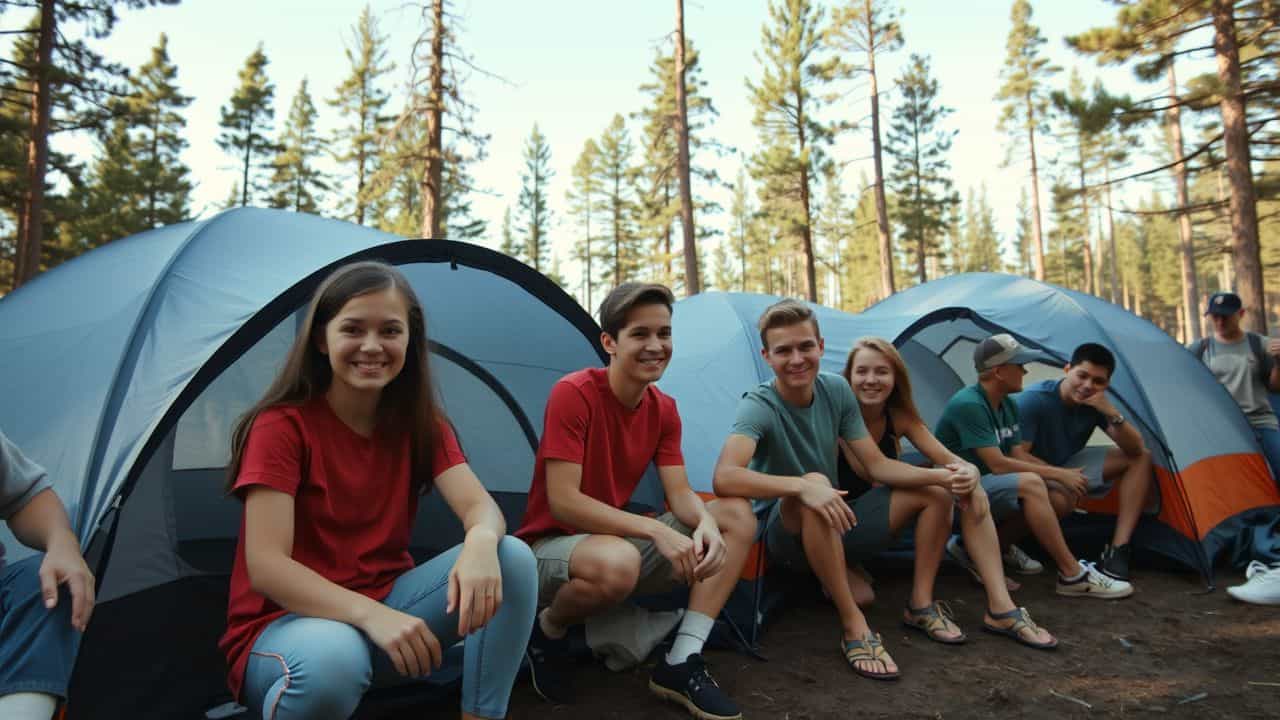
Dome tents are the go-to choice for many campers. They’re easy to set up and can handle tough weather – perfect for your next outdoor trip!
Features and Advantages of Dome Tents
Dome tents are a camper’s favorite. They’re easy to set up and super sturdy. These tents have a curved shape that’s great at handling wind and rain. Most can fit one to eight people, perfect for solo trips or family outings.
POMOLY’s new X6Pro and X4Pro models are even better dome tents. They’re made to handle tough weather and keep you comfortable inside.
A good dome tent is like a turtle shell – it protects you from the elements while letting you carry your home on your back.
Compared to a hard shell roof top tent, dome tents are cheaper and more flexible. They’re light, so you can carry them in your backpack for hiking trips.
The dome shape gives you more headroom than other tent styles. Plus, they’re quick to set up – ideal for when you’re tired after a long day of hiking. Just keep in mind, while dome tents are great all-around, they might have trouble in very strong winds.
Popular Applications of Dome Tents
Dome tents rock for all kinds of outdoor fun. They’re perfect for weekend trips with your buddies or solo adventures in the wild. These tents handle wind like champs, making them great for beach camping or mountain getaways.
Their roomy design fits 2 to 8 people, so you can bring the whole crew along. Plus, they’re a breeze to set up – no fuss, no muss.
Campers love dome tents for music festivals and tailgating parties, too. They offer a cozy spot to crash after a long day of jamming or cheering. Hikers dig ’em for their light weight and easy carry.
Whether you’re hitting the trails or chilling by the lake, dome tents have got your back. They’re the Swiss Army knife of camping shelters – versatile, tough, and always ready for action.
Understanding A-Frame Tents
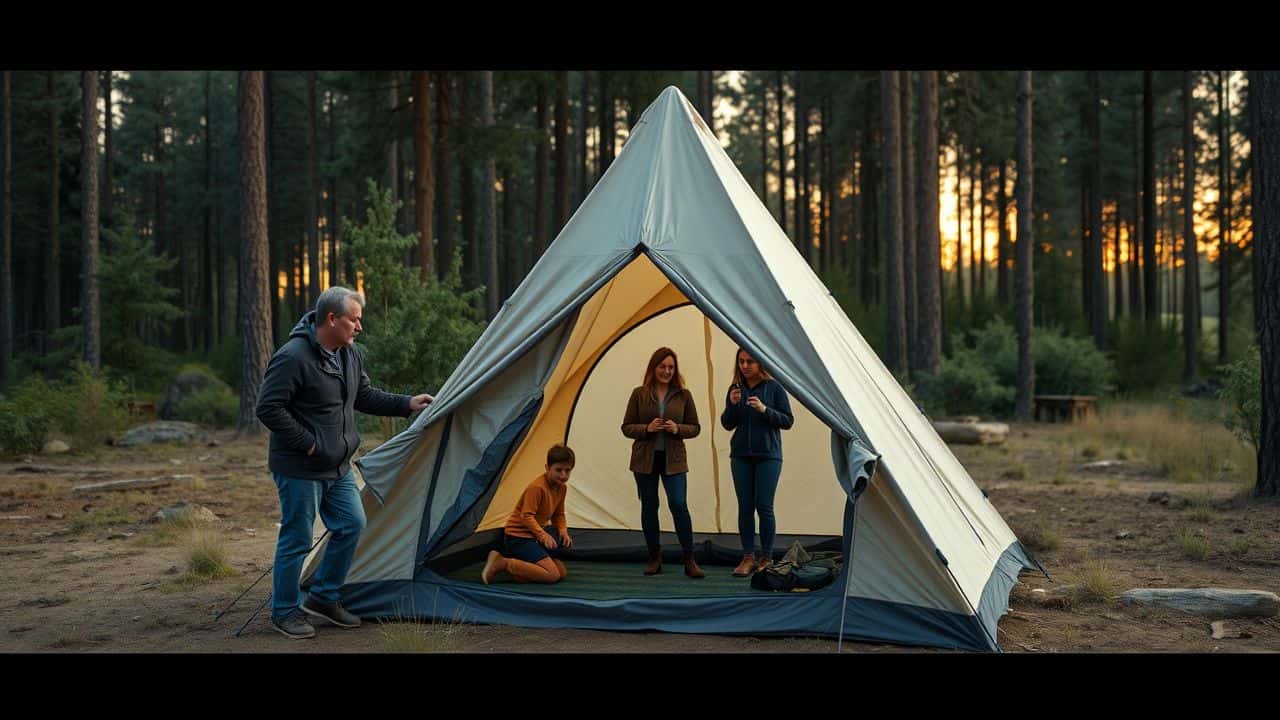
A-frame tents are a classic choice for campers who love simplicity. These triangular shelters offer a cozy space that’s easy to set up and take down – perfect for quick weekend getaways or longer trips in the woods.
Design and Benefits of A-Frame Tents
A-frame tents have a classic triangle shape. They’re simple and easy to set up. These tents use fewer poles, making them lighter to carry. Their sloped sides shed rain and snow well.
This design gives them strength in bad weather.
Inside, A-frames offer decent space for sleeping. But headroom can be tight. Many campers like their nostalgic look. They remind us of old-school camping trips. Modern A-frames now come in lighter materials.
This makes them great for backpacking too.
A-frame tents are like the trusty old friends of the camping world.
Now, let’s look at the structure and perks of tunnel tents.
Typical Uses of A-Frame Tents
Moving from the design perks, let’s look at how folks use A-frame tents. These classic shelters shine in many camping scenes. Car campers love ’em for quick weekend trips. They’re a breeze to set up and pack away – perfect for those last-minute getaways.
Scout groups and schools often pick A-frames for group outings. They’re tough enough to handle rowdy kids and weather tantrums. Plus, their simple shape makes them easy to teach newbies how to pitch.
I’ve seen these tents stand strong at music fests and beach camps too. Their sloped sides shed rain like a champ, keeping campers dry even in soggy conditions.
Benefits of Tunnel Tents
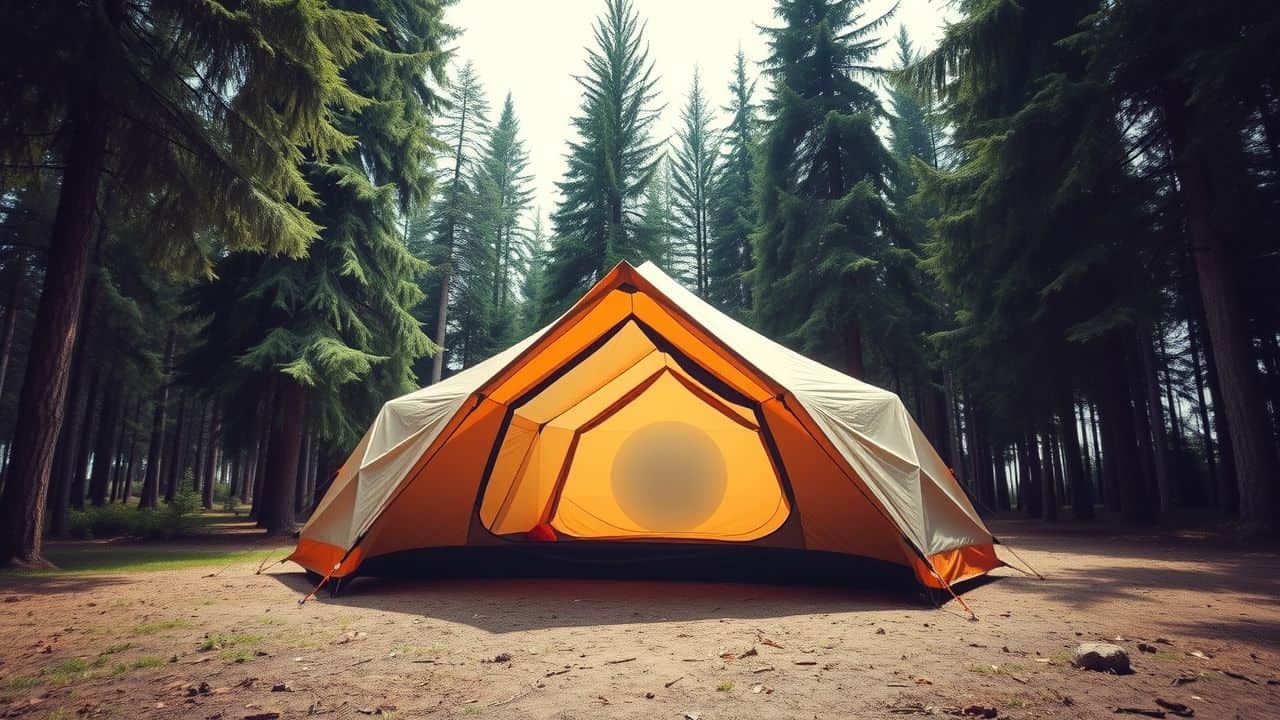
Tunnel tents are a camper’s dream come true. They offer tons of space and are a breeze to set up – perfect for those who want comfort without the hassle.
Structure and Advantages of Tunnel Tents
Tunnel tents are long and narrow, like a tube. They use flexible poles that curve from side to side, creating a tunnel shape. This design gives them a great space-to-weight ratio. You get lots of room inside without lugging around a heavy tent.
Plus, they’re super stable in windy conditions. The wind flows over the smooth shape instead of catching on flat sides.
I’ve used tunnel tents on many camping trips as a good hobby for men. They’re a breeze to set up – just slide the poles through the sleeves and stake it out.
The long shape means plenty of headroom to move around. And boy, do they handle bad weather like champs! One stormy night, my tunnel tent stayed rock-solid while other tents flapped in the wind.
A tunnel tent is like a cozy cocoon in the wilderness.
Common Uses of Tunnel Tents
Moving from the structure to the uses, tunnel tents shine in various camping scenarios. These long, roomy shelters are perfect for group trips. Families love them for their ample space and separate sleeping areas.
They’re also great for car camping, where you can bring more gear and need extra room to spread out.
Outdoor enthusiasts often pick tunnel tents for extended stays at campsites. The extra space lets you set up a cozy home away from home. You can easily fit sleeping bags, camp chairs, and even a small table inside.
Plus, the vestibule area is handy for storing muddy boots or wet gear. Hikers and backpackers might choose lighter versions for their treks, enjoying the balance of space and portability.
Geodesic and Semi-Geodesic Tents Explained
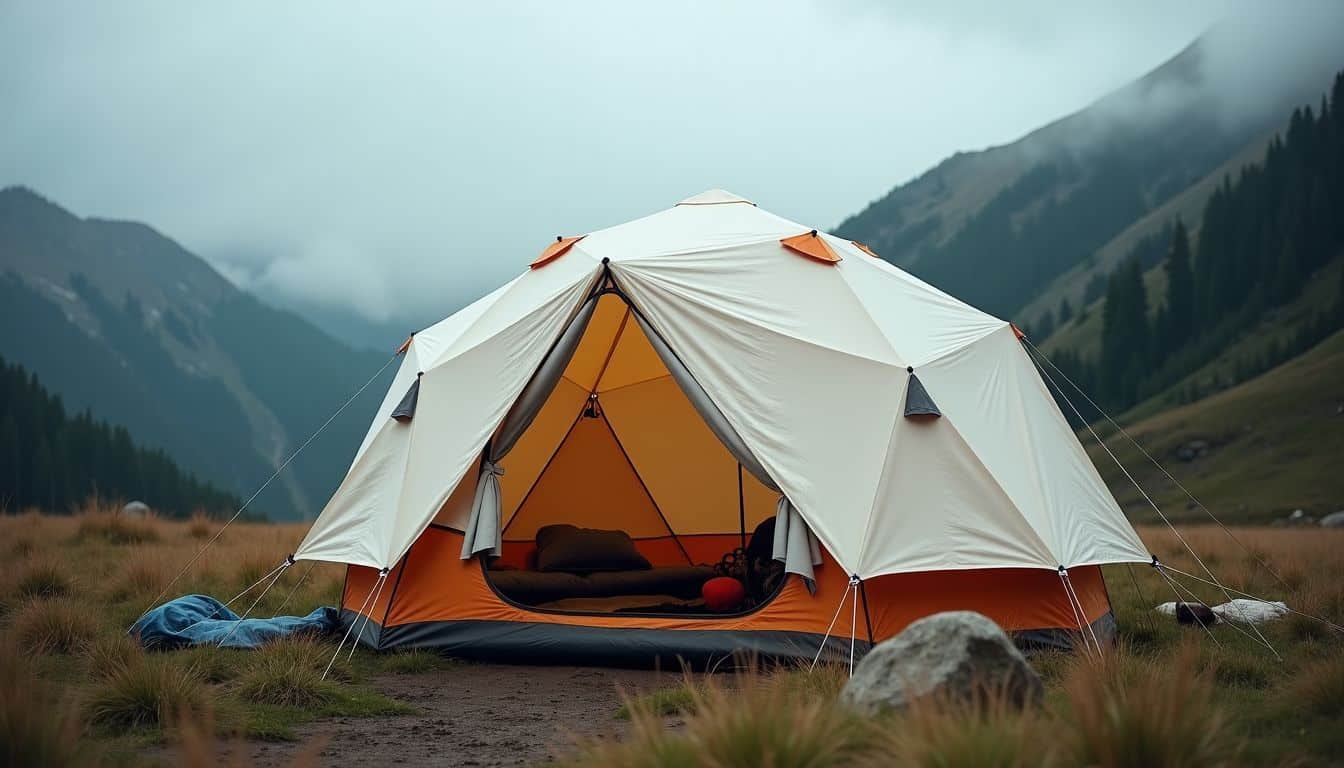
Geodesic tents are like mini space stations for campers. They’re tough as nails and can handle wild weather, making them perfect for extreme outdoor adventures.
Engineering and Benefits of Geodesic Tents
Geodesic tents are tough cookies in the camping world. They use a bunch of poles that cross each other to make a dome shape. This design is super strong and can handle nasty weather like a champ.
The crisscrossing poles spread out the force from wind and snow, making these tents extra sturdy.
These tents aren’t just tough – they’re smart too. They give you more space inside without adding extra weight. That’s a big win for campers who want room to move but don’t want to lug around a heavy tent.
Plus, their round shape helps them stay warm by cutting down on heat loss. It’s like having your own little fortress in the wild!
A geodesic tent is like a cozy, portable igloo for adventurers.
Practical Applications of Geodesic Tents
Geodesic tents shine in tough spots. They’re top picks for mountain climbers and hikers who face harsh weather. These tents stand strong against heavy winds and snow loads. Their dome shape spreads force evenly, making them super sturdy.
I’ve used one on a windy ridge, and it didn’t budge an inch!
Extreme campers love geodesic tents too. They’re great for long trips in wild areas. The design gives lots of headroom and floor space. This makes them comfy for extended stays. Plus, their strength means you can set up camp in exposed areas.
It’s like having a portable fortress in the wilderness!
Features of Cabin Tents
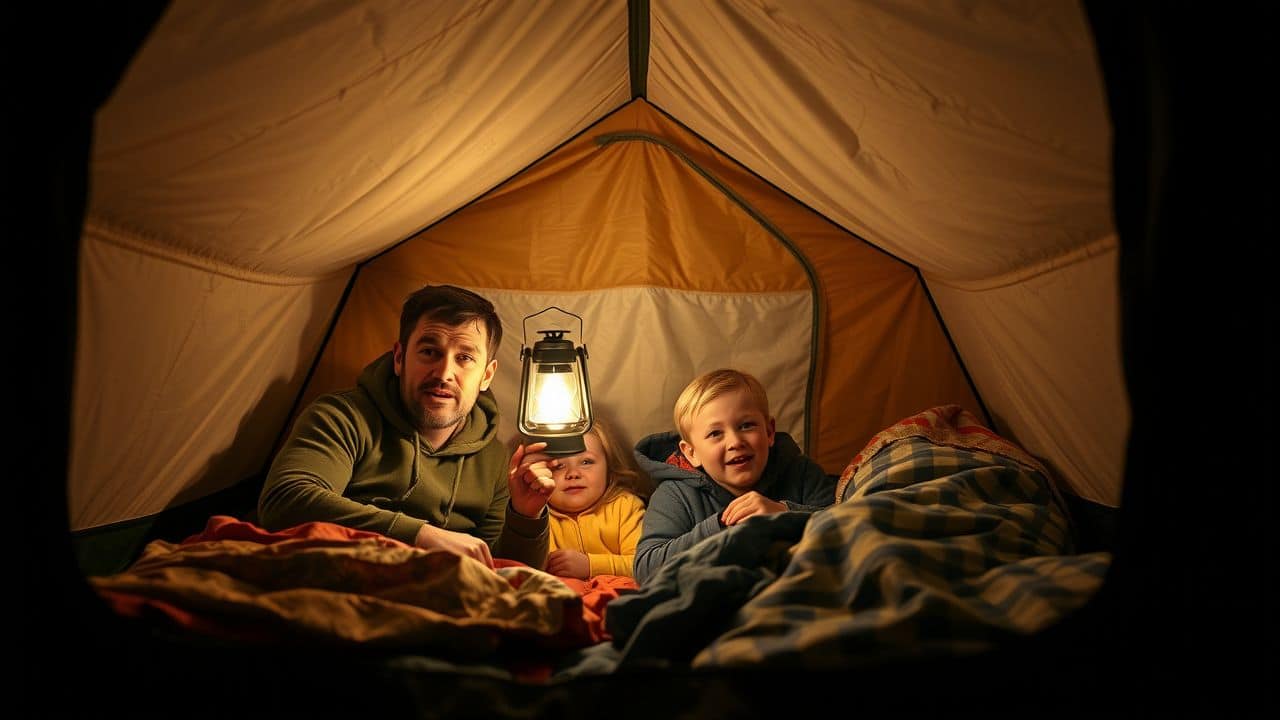
Cabin tents are like mini-homes in the wild. They offer loads of space and tall ceilings, perfect for standing up and moving around freely.
Description and Advantages of Cabin Tents
Cabin tents are the kings of comfort in the camping world. They boast tall, straight walls that let you stand up and move around freely. No more hunching over or crawling on your knees! These tents offer loads of space for your gear, cots, and even chairs.
You’ll feel right at home with their roomy interiors and often multiple rooms.
A cabin tent is like bringing your bedroom to the great outdoors.
The perks of cabin tents don’t stop at space. Many models come with big windows and mesh panels for awesome airflow. This keeps things cool and fresh, even on hot summer nights. Some even have special features like built-in closets or gear lofts.
Talk about luxury in the wild! While they’re not the lightest option, cabin tents are perfect for car camping or long stays at campgrounds.
Common Applications of Cabin Tents
Cabin tents shine for family trips and group camping. Their high ceilings let you stand up straight, making them comfy for long stays. These tents are tough cookies, built to last through extended outdoor adventures.
You’ll often spot them at campgrounds where folks plan to hunker down for a while. They’re perfect for those who want a home away from home… with a bit more elbow room.
Festivals and outdoor events love cabin tents too. They offer a roomy base for gear storage and hanging out. Some campers even use them as makeshift kitchens or living rooms in the wild.
With their boxy shape, these tents are easy to organize – no more tripping over backpacks in the dark! Plus, they’re a hit with car campers who don’t mind lugging a bit more weight for extra space.
Multi-Room Tents for Family Camping
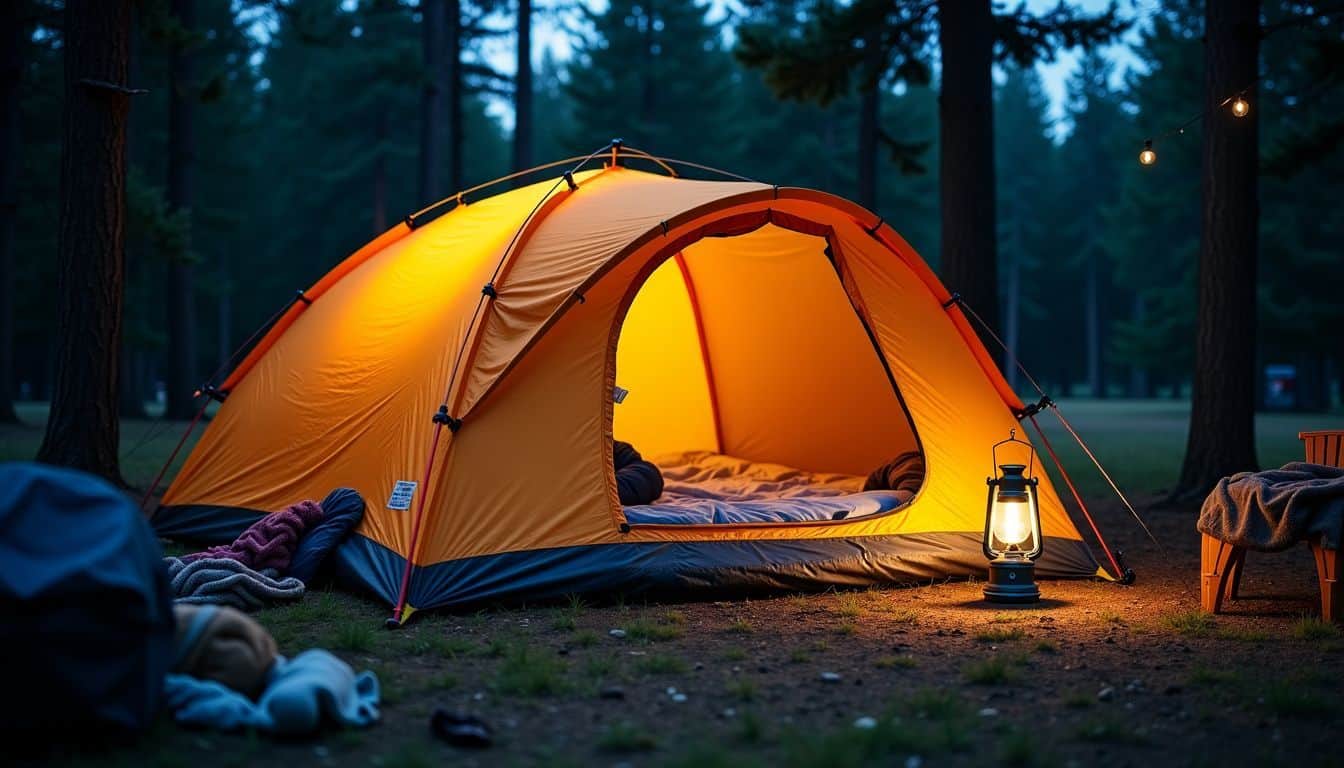
Multi-room tents are a game-changer for family camping trips. They’re like mini-houses in the wild, giving everyone their own space to chill. You’ll love the extra room for gear and the chance to escape snoring relatives!
Design Features and Benefits of Multi-Room Tents
Multi-room tents are like mini-homes in the wild. They’ve got separate spaces for sleeping, hanging out, and storing gear. You’re camping with your buddies, and everyone gets their own “room.” No more tripping over each other’s stuff! These tents are perfect for big groups or families.
They’re roomy and comfy, making your outdoor stay feel like a luxury getaway.
But here’s the real kicker – multi-room tents are tough as nails. They can handle rough weather and keep you dry. Models like the Kodiak Canvas Grand Cabin are built to last. Some even have cool features like Air Truss tech, which makes setup easy.
Sure, they’re a bit heavier and pricier than regular tents. But the extra space and comfort are worth every penny. It’s like bringing a slice of home to the great outdoors!
Uses of Multi-Room Tents in Camping
Multi-room tents are a game-changer for family camping trips. These spacious shelters offer separate areas for sleeping and hanging out. Kids can have their own space, while adults enjoy some privacy.
It’s like having a mini-home in the great outdoors! You can set up a cozy bedroom, a living area for games, and even a spot to stash your gear.
These tents shine when you’re camping with a group. They’re perfect for longer stays or when the weather turns sour. You’ll have room to spread out, relax, and enjoy nature without feeling cramped.
Plus, it’s easier to keep your stuff organized. No more tripping over backpacks or searching for lost socks! Next up, let’s talk about pop-up tents – the quick and easy option for campers on the go.
Guide to Pop-Up Tents
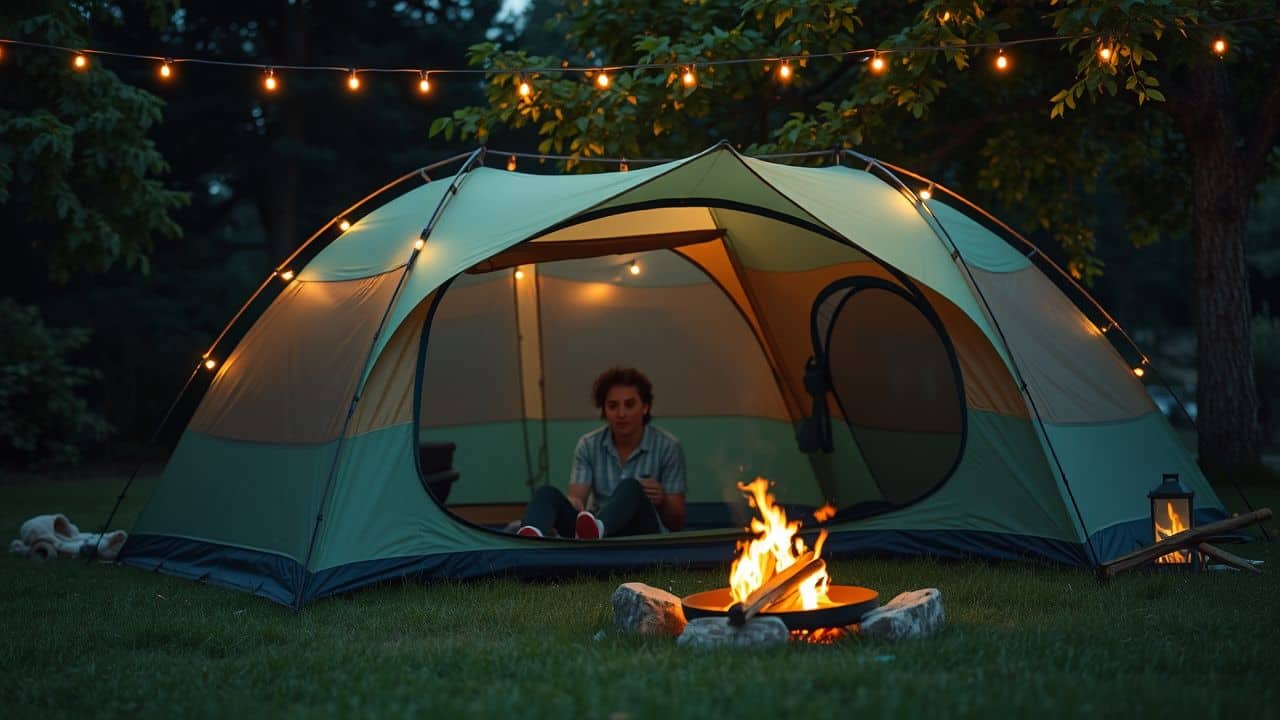
Pop-up tents are a camper’s dream come true. They spring to life in seconds, saving you time and hassle when you’re itching to start your adventure.
Functionality and Benefits of Pop-Up Tents
Pop-up tents are a camper’s dream come true. They spring to life in seconds, thanks to their clever spring-loaded frame. No more wrestling with poles or puzzling over instructions! These tents are perfect for quick trips or last-minute adventures.
Just toss them out, and voila – instant shelter.
But speed isn’t their only trick. Pop-ups are lightweight and compact, making them a breeze to carry. They’re ideal for festivals, beach days, or backyard sleepovers. While they might not stand up to harsh storms, they’re great for fair weather camping.
Plus, their simple design means fewer parts to break or lose. It’s camping made easy – just pop, sleep, and go!
Ideal Conditions for Pop-Up Tents
Now that we’ve covered the perks of pop-up tents, let’s talk about when to use them. These quick-pitch wonders shine in mild weather – they’re perfect for summer festivals, backyard sleepovers, or beach trips.
Pop-ups handle light rain and gentle breezes like champs, but they’re not built for storms or heavy winds.
Most pop-ups fit 2 to 4 people snugly. They’re great for solo campers or small groups who pack light. If you’re on a budget, pop-ups won’t break the bank – many cost less than $200.
They trade durability for speed, so pick your camping spots wisely and enjoy the ease of setup in seconds!
Why Choose Inflatable Tents
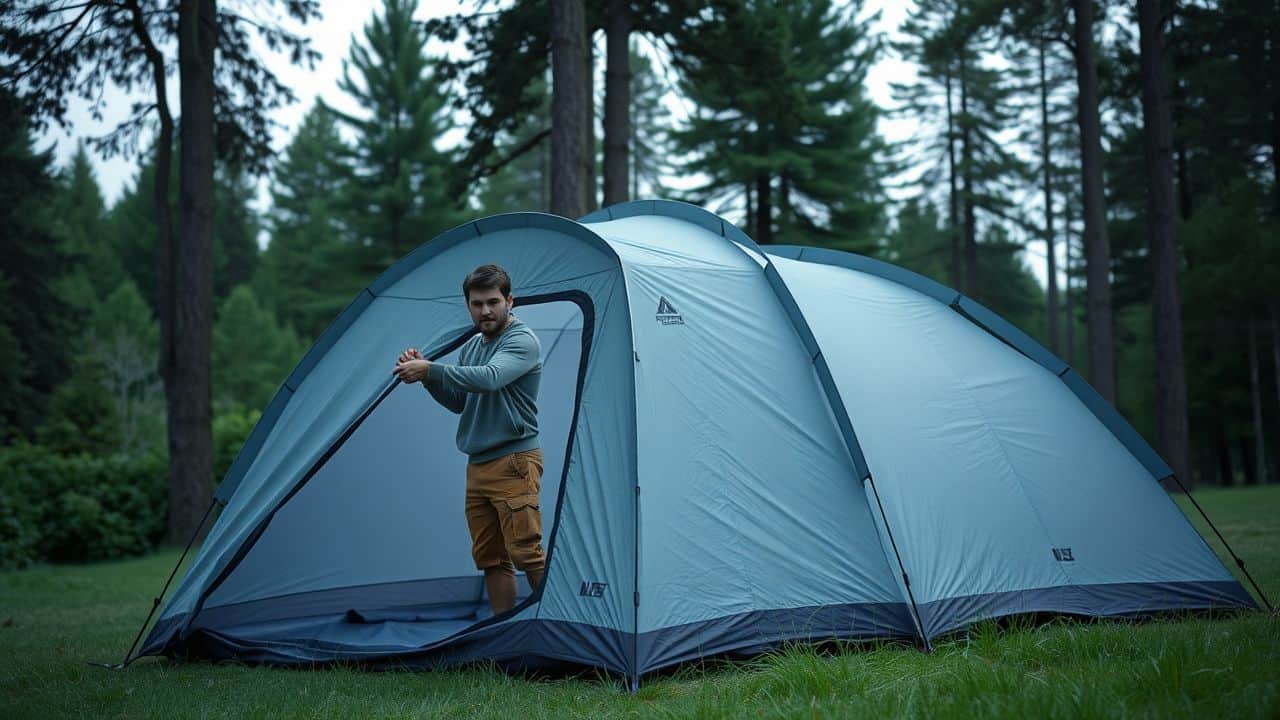
Inflatable tents are a game-changer for campers who hate complex setups. They’re quick to pitch and pack away, making them perfect for folks who want to spend more time exploring and less time fiddling with poles.
Convenience and Benefits of Inflatable Tents
Inflatable tents are a game-changer for camping. They’re super easy to set up – just pump ’em up, and you’re done! No more wrestling with poles or cursing at confusing instructions.
These tents are light and pack down small, so they’re a breeze to carry. Plus, they’re tough as nails and can handle rough weather like a champ.
The smart design of inflatable tents keeps water from pooling on top. This means you’ll stay dry even in heavy rain. They’re perfect for guys who want a fuss-free camping trip. Whether you’re hitting the beach or the mountains, these tents have got your back.
Now, let’s look at when these air-filled wonders really shine….
Specific Uses of Inflatable Tents
Inflatable tents shine in tough spots. They’re great for quick trips and harsh weather. I once used one on a windy beach – it stood firm while others fell. These tents also work well for big groups.
They offer lots of space without the usual setup hassle. Plus, they’re a hit with kids. The fun, bouncy feel makes camping exciting for little ones. It’s like having a mini bounce house in nature!
For solo trips, inflatable tents are a game-changer. They’re light and easy to carry, perfect for hikers and bikers. I’ve packed one on my motorcycle tours – it’s a breeze to set up after a long day’s ride.
Some models even float, making them ideal for river camping or wet areas. With their quick setup, they’re also top picks for music festivals and outdoor events.
The Charm of Teepee Tents
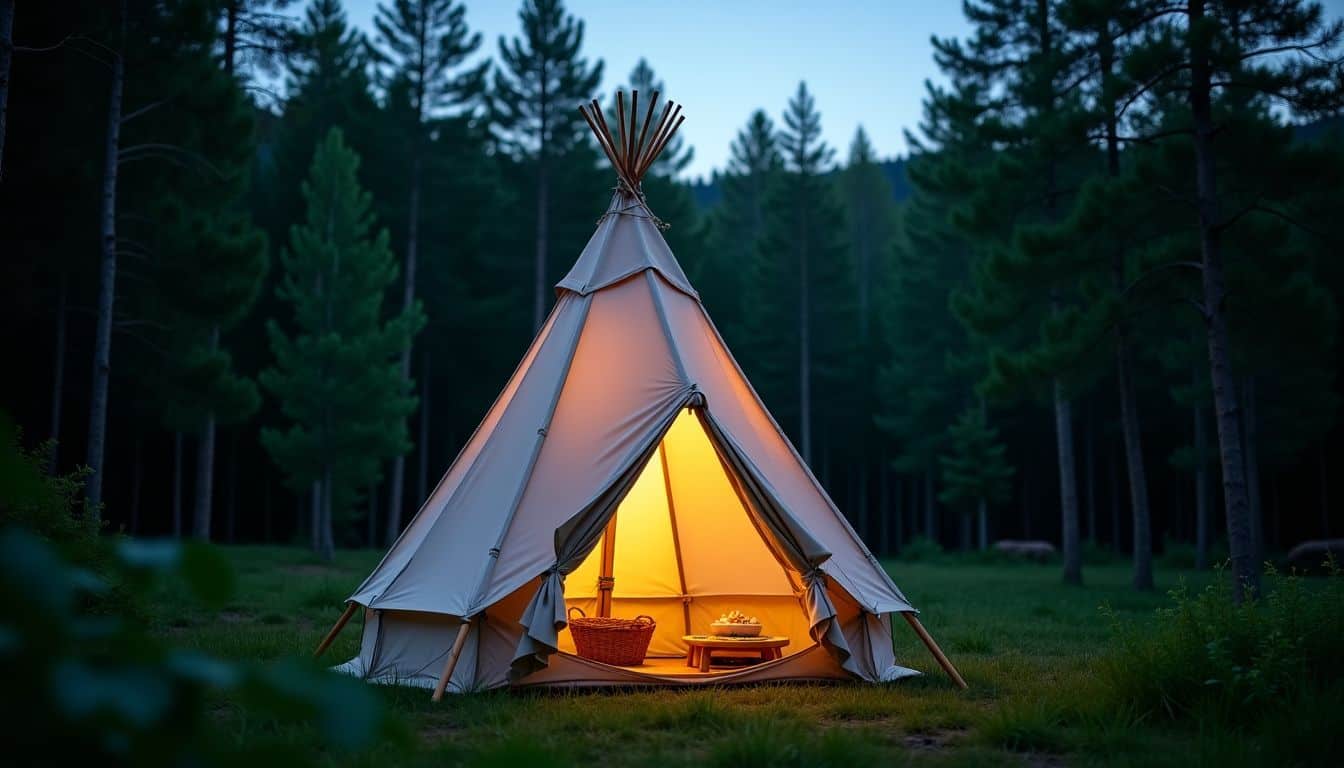
Teepee tents bring a touch of magic to your camping trip. They’re not just shelters – they’re time machines that whisk you back to the days of old… with modern comforts, of course! Picture yourself cozied up inside, feeling like a true adventurer while still enjoying your inflatable mattress.
Unique Features and Benefits of Teepee Tents
Teepee tents stand out with their cone shape and single center pole. They offer a roomy interior and high peak height, perfect for tall campers. These tents shine in temp control – the shape lets hot air rise and escape through top vents.
Plus, some models can fit a small stove, making them great for cold-weather camping.
Guys love teepee tents for their easy setup and takedown. The simple design means less fuss with poles and stakes. Many teepees use lightweight materials, so they’re a breeze to carry.
Their sturdy structure holds up well in wind, and the sloped sides shed rain like a champ. For men who want a mix of comfort and style in the wild, teepee tents hit the bullseye.
Suitable Conditions for Teepee Tents
Teepee tents shine in open spaces and mild weather. They’re great for summer camping trips or backyard sleepovers. I once set up a teepee tent in my yard for a stargazing night – it was perfect! These tents handle light rain well, but they’re not the best for heavy storms or snow.
Their tall, cone shape lets airflow nicely, keeping things cool on warm nights.
For winter camping, teepee tents can work with some tweaks. Their floorless design is a plus in snowy conditions. It cuts down on bug worries too. Some folks add a wood stove inside for extra warmth.
Just be careful with fire safety! High winds can be tricky for teepees, so pick a sheltered spot if it’s breezy. Overall, teepee tents are versatile… but they really excel in fair weather and open fields.
Selecting Backpacking Tents
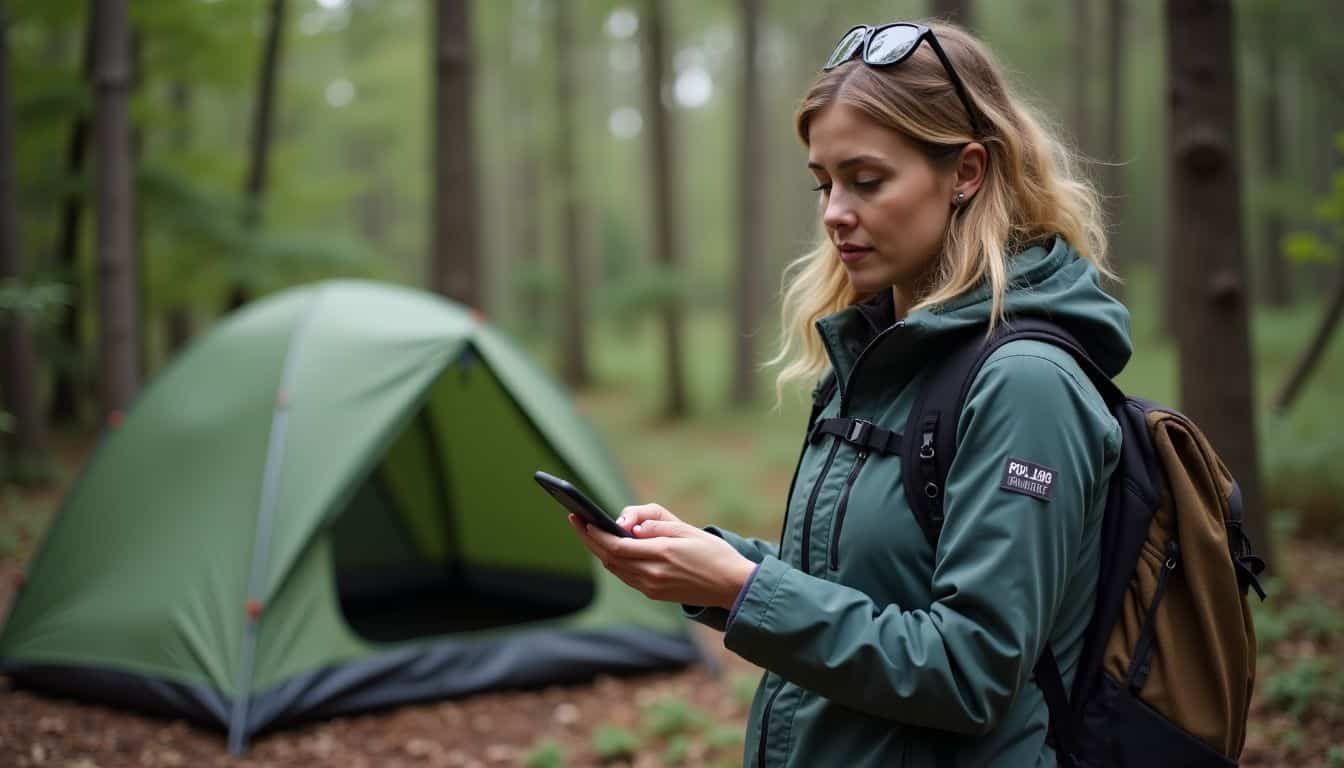
Backpacking tents are your home away from home on the trail. They’re light, tough, and pack small – perfect for long hikes and wild camps. These tents keep you dry and comfy without weighing you down or taking up too much space in your pack.
Characteristics and Perks of Backpacking Tents
Backpacking tents are built tough and light. They’re made to carry on long hikes without weighing you down. Most weigh under 5 pounds – perfect for trekkers who count every ounce. These tents also pack small, fitting neatly in your bag.
But don’t think “small” means cramped. Many offer cozy space for one or two campers to sleep and store gear.
The best part? These tents are quick to set up. After a long day on the trail, you’ll have shelter in minutes. Brands like Big Agnes and MSR make top-notch options. Their tents, like the Tiger Wall and Hubba Hubba, strike a sweet spot.
They blend comfort, strength, and weather protection. Plus, they’re a breeze to pitch – even when you’re tired, and it’s getting dark.
When to Use Backpacking Tents
Now that we’ve covered the cool features of backpacking tents, let’s chat about when to use them. These lightweight shelters are perfect for multi-day hikes or camping trips where you’re lugging all your gear.
They’re a hiker’s best buddy when you’re trekking through the wild, far from your car or campsite.
Backpacking tents are awesome in remote areas where you need to pack light. They’re perfect for outdoor enthusiasts who love to explore off the beaten path. If you’re planning a trek through mountains or forests, a backpacking tent is your go-to pick.
Just keep in mind to choose a 3-season or 4-season tent based on the weather you’ll encounter. And hey, if you’re into ultralight backpacking, these tents are essential to keep your pack weight down.
Specialty Tents for Unique Needs
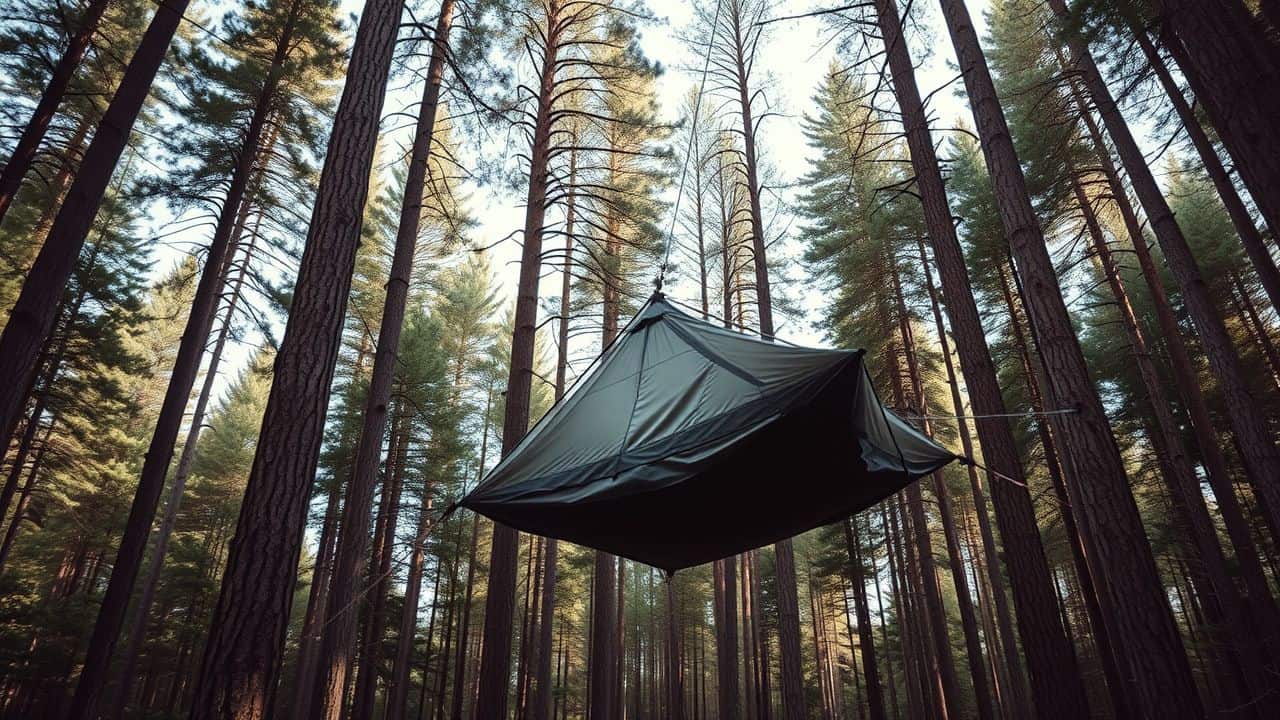
Ever dreamed of sleeping in the trees? Specialty tents can make it happen. These cool tents – like hammock, suspended, and rooftop models – offer wild new ways to camp.
Overview of Hammock, Suspended, and Rooftop Tents
Hammocks, suspended tents, and rooftop tents offer unique camping experiences. Hammocks are breezy and comfy, keeping bugs at bay while you sway in the trees. Suspended tents take it up a notch – literally.
They hang high above the ground, perfect for thrill-seekers who love extreme camping. Rooftop tents are a whole different ball game. They perch on top of your SUV, giving you a bird’s-eye view of your surroundings.
Let’s talk about hard shell roof top tents. These bad boys are tough as nails and pop up in a jiffy. Gianluca Boncompagni, co-founder of Off Road Tents, swears by them for quick setups and takedowns.
They’re great for car camping and road trips. Just park, flip open your tent, and voila! You’re ready to hit the hay after a long day of adventure.
Special Features and Uses of Unique Tents
Moving from hammocks and rooftop tents, let’s explore some special features of unique tents. These tents offer cool perks for campers who want something different. Take the Big Agnes Fly Creek HV UL2 Bikepack.
It’s a dream for cyclists who love to camp. The tent has short poles that fit on bike racks, making it easy to carry on long rides. Another neat option is the MSR Hubba Tour 2. This tent has a huge vestibule – perfect for storing gear or cooking when it rains.
It’s like having an extra room!
Some unique tents are made for extreme weather. The North Face Assault 2 FUTURELIGHT can handle high winds and heavy snow. It’s a go-to for serious mountain climbers. For those who hate setting up tents, inflatable ones are a game-changer.
They use air beams instead of poles and pop up in minutes. No more fumbling with tent poles in the dark! These special tents show how camping gear keeps getting better and more fun to use.
Important Features & Considerations
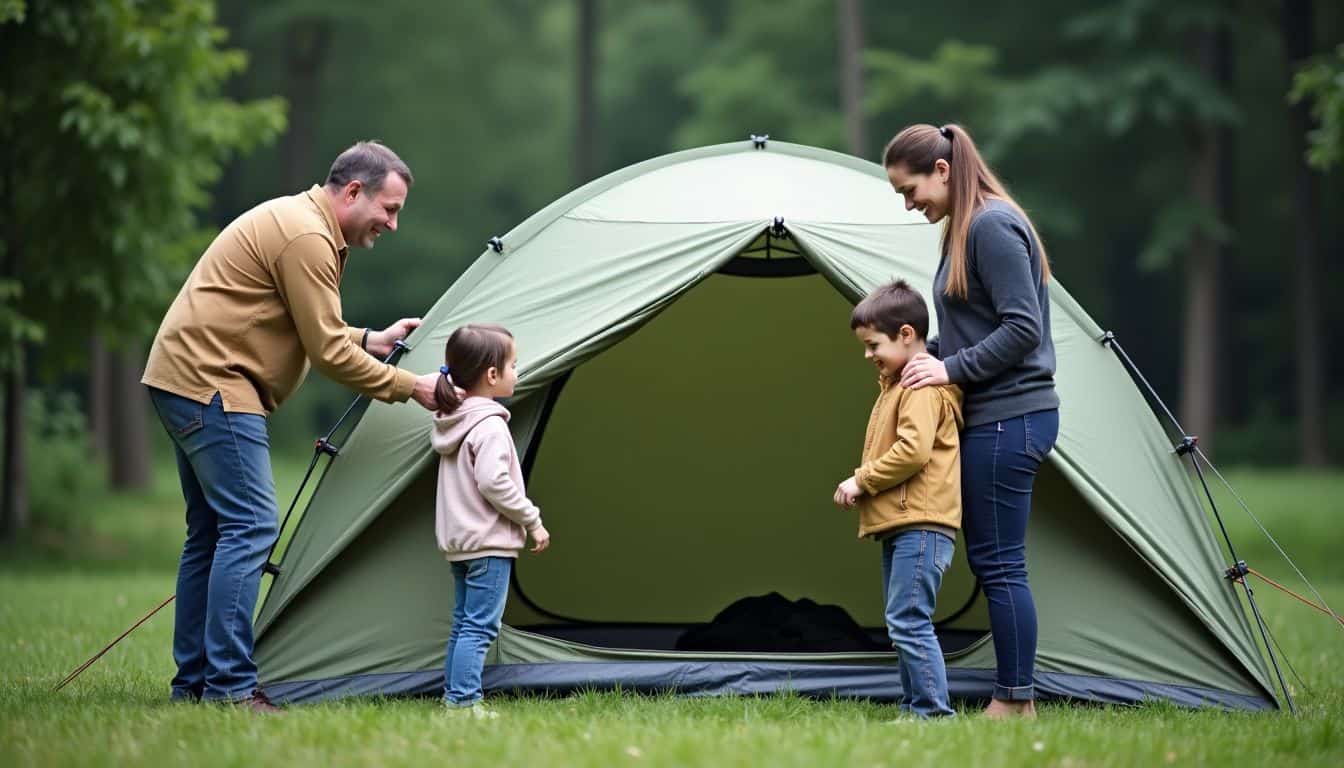
When picking a tent, you gotta think about more than just size. Weatherproofing, ventilation, and storage space can make or break your camping trip – trust me!
Essential Weatherproofing Features
Weatherproofing is key to a cozy camping trip. Your tent needs to stand up to Mother Nature’s mood swings. A good rainfly is your first line of defense. It’s like an umbrella for your tent, keeping you dry when the sky opens up.
Look for tents with higher denier ratings – they’re tougher and last longer. Think of it as armor for your home-away-from-home.
But wait, there’s more! Seam tape is a game-changer. It’s the unsung hero that keeps water from sneaking in through the stitches. I once camped without it and woke up in a puddle. Trust me, you don’t want that experience.
These features aren’t just nice-to-haves… they’re must-haves for any serious camper. They’ll keep you dry, comfy, and ready for whatever the great outdoors throws your way.
Importance of Ventilation in Tents
Good airflow in tents is key for comfort and safety. It keeps things cool and dry, which means no stuffy, humid nights. Plus, it stops condensation from building up inside. This matters a lot if you’re using a tent stove.
Without proper venting, you could face dangerous fumes.
Tent makers use smart tricks to boost airflow. Mesh panels, vents, and windows all help fresh air move through. Some even have special fabrics that let air pass but keep rain out.
Next up, we’ll look at how much space you need in your tent and where to stash your gear.
Interior Space and Storage Options
Tent makers know you need room to breathe… and store your stuff. That’s why they’ve gotten creative with space. Many tents now sport large vestibules – perfect for stashing muddy boots or bulky gear.
Inside, you’ll find nifty gear lofts and pockets galore. It’s like having a floating closet right above your head!
But space isn’t just about storage. Multi-room tents are game-changers for families or groups. They offer separate “bedrooms” and living areas, just like home. And according to the camping experts at Unfinished Man, your space and storage needs depend on the type of camping you plan to do.
Solo backpackers might opt for a snug 1-person tent, while car campers can go big with a roomy cabin-style setup.
People Also Ask
What’s the deal with bivy sacks and bivy tents?
Bivy sacks and tents are like sleeping bag cocoons. They’re super lightweight and perfect for solo adventurers. Imagine snoozing under the stars without the bulk. Just you, your bivvy, and the great outdoors.
How do hammock tents stack up against traditional camping shelters?
Hammock tents are the cool cats of camping. They keep you off the ground and swaying in the breeze. No more rocks poking your back! But watch out for those chilly nights – you might need extra insulation.
Are bell tents worth the hype for family camping trips?
Bell tents are like the castles of campgrounds. They’re roomy, stylish, and perfect for family bonding. Picture telling stories around a campfire, then retreating to your cozy fortress. Just remember, they’re not exactly featherweight.
How do canopy tents handle different weather conditions?
Canopy tents are tough cookies. They shield you from sun, rain, and wind. But don’t expect miracles in a hurricane! These bad boys are best for picnics, beach days, or as a campsite hangout spot.
What’s the scoop on truck tents for car camping enthusiasts?
Truck tents are game-changers for road warriors. They turn your pickup into a mobile motel. No more searching for flat ground or lugging gear. Just park, pop up your tent, and voila – home sweet home on wheels!
How do tent materials affect durability and weight?
Tent materials are like choosing between a tank and a sports car. Heavier fabrics last longer but weigh you down. Lightweight options are a breeze to carry, but might not weather storms as well. It’s all about finding your sweet spot between durability and portability.
References
https://txzoutdoors.com/https-txzoutdoors-com-products-camping-tent-tunnel-tent/
https://www.thenorthface.eu/en-fi/help-section/faq/dome-or-tunnel-tents
https://www.curated.com/journal/6000/what-are-the-different-types-of-tents
https://www.bikatadventures.com/home/blog/different-types-of-tent (2021-06-22)
https://www.shelter-structures.com/blogs/exploring-the-cabin-tents/
https://campingguidance.com/best-cabin-tents/
https://coolofthewild.com/multi-room-tents/
https://www.curated.com/journal/3410001/the-best-multi-room-tents-for-your-family-friends (2024-01-18)
https://www.shelter-structures.com/blogs/pop-up-tent-guide/
https://www.fieldmag.com/articles/pop-up-tent-guide (2021-05-12)
https://www.4wdtalk.com/blow-up-tent-for-camping-a-guide-to-inflatable-tents/
https://www.divein.com/outdoor/teepee-tent/ (2023-09-20)
https://www.pomoly.com/The-Benefits-of-Camping-in-a-Teepee-Tent-a713561.html (2024-02-20)
https://seekoutside.com/tipi-tents/?srsltid=AfmBOorvYYC3MIMj4LXbX0FSa3Fb4c3kHCdWZYIlcuPGp8z2Lgep65xa
https://www.cleverhiker.com/backpacking/best-tents-backpacking/ (2024-08-22)
https://www.switchbacktravel.com/info/how-to-choose-backpacking-tent (2024-07-25)
https://heavenandnature.brodinpress.com/tent-vs-hammock-camping/
https://www.rei.com/learn/expert-advice/family-base-camping-tent.html
https://blog.whiteduckoutdoors.com/the-ultimate-guide-to-tent-ventilation-accessories/ (2024-09-22)
https://eurekacamping.johnsonoutdoors.com/us/tent-buying-guide

